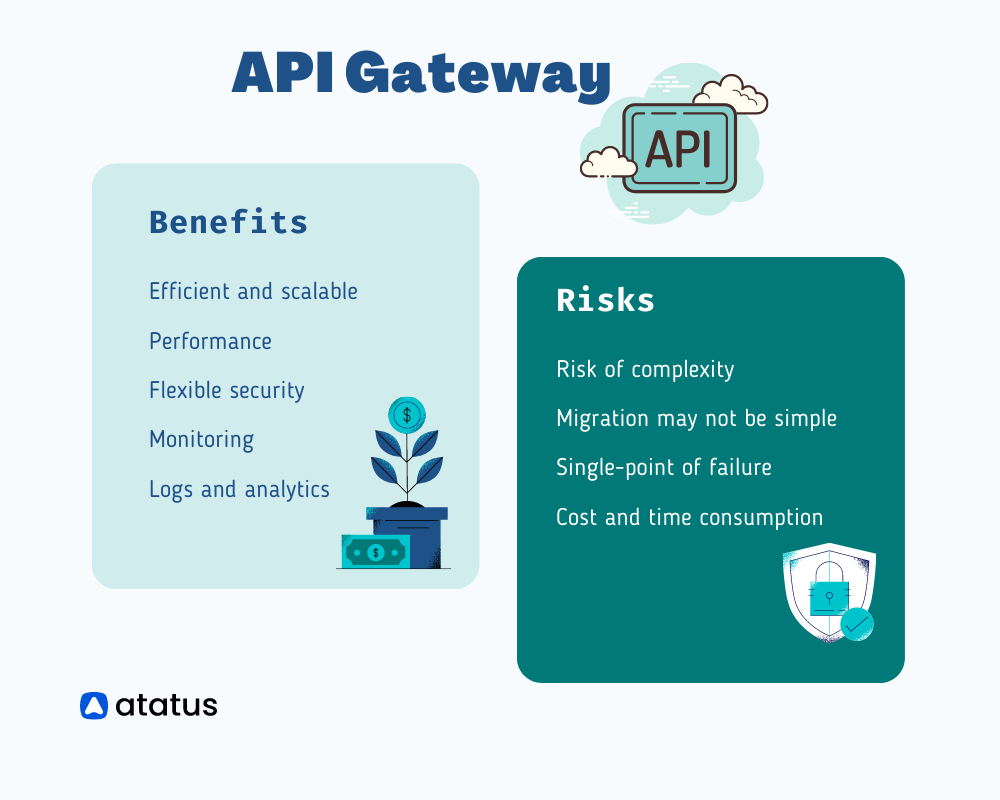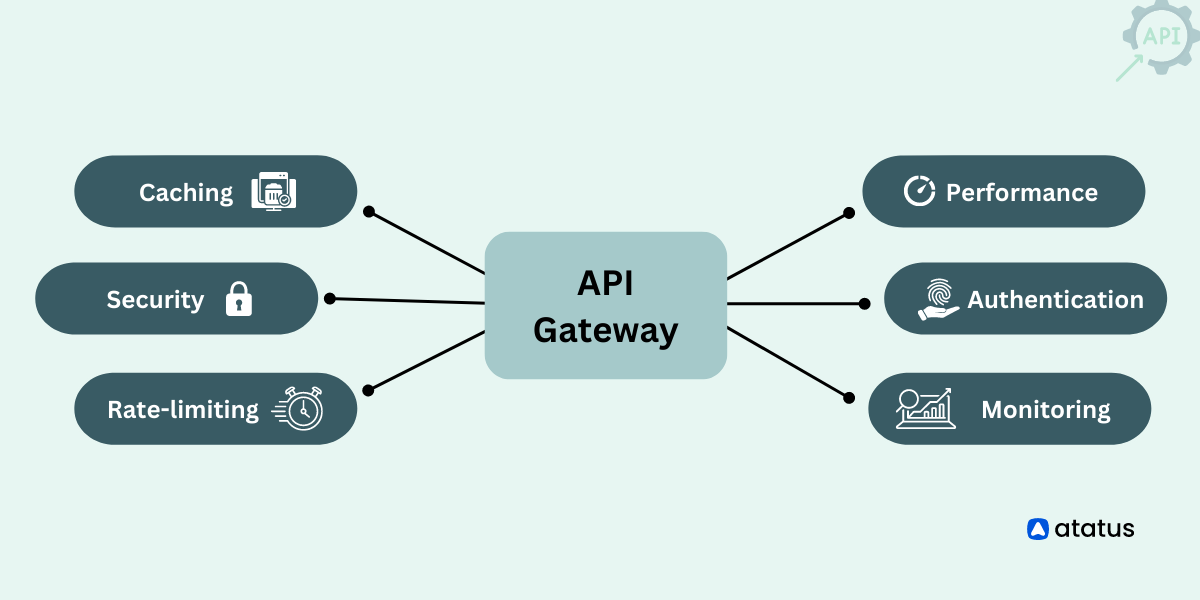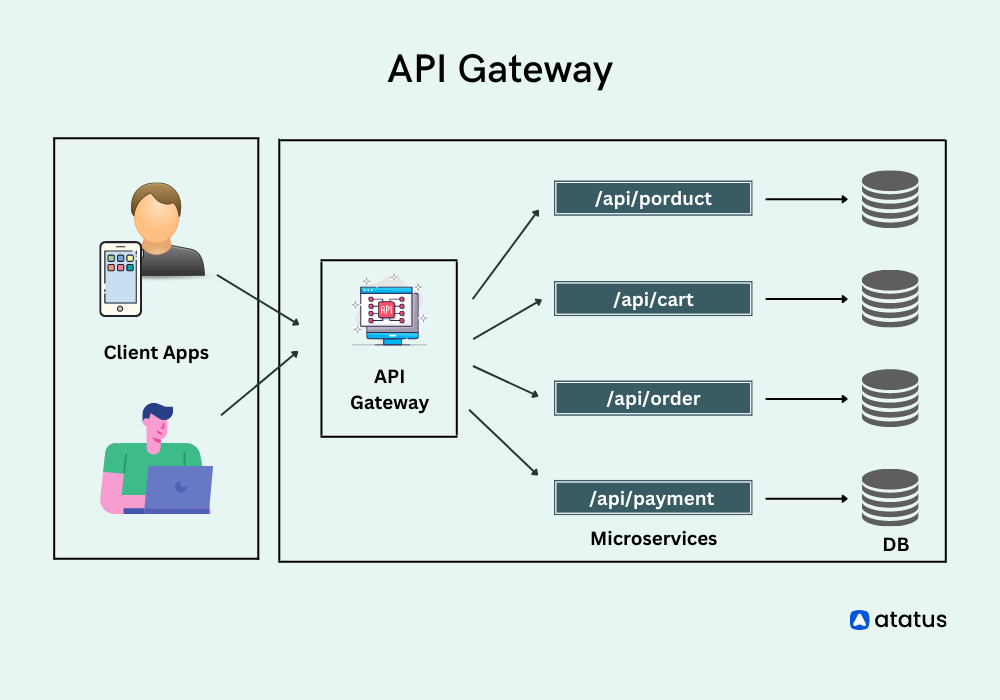An Overview of Microservices
The scalability, flexibility, and capacity to facilitate quick application development that comes with microservices architecture have led to its tremendous appeal in the last several years. A set of independently developed, deployed, and scalable services is the building block of an application under this architecture. With the help of application programming interfaces (APIs), separate “microservices” carry out distinct but complementary business tasks.
How Can API Gateways Help Keep Microservices Development Safe?
Every request from a client must go via an API gateway before reaching the microservices. As a layer of abstraction, they direct requests to specific microservices development according to rules that have already been set. Furthermore, API gateways are crucial to microservice security since they manage authentication, access control, and security.
Organizations can ensure that security controls are applied consistently across all services by centralizing access to microservices through API gateways. Common security dangers like SQL injections and cross-site scripting can be prevented by using API gateways, which can authenticate and allow requests, check input parameters, encrypt communication, and more.
Advantages of API Gateways for Security Control

There are a number of advantages to implementing API gateways for microservices development access control. First, by consolidating all of the access policies into one place, it makes their management much easier. Companies can manage user permissions, enforce access restrictions, and monitor traffic easily with a single point of control.
Additionally, API gateways offer an extra safeguard against intruders and harmful assaults. To stop potential security flaws from reaching the microservices, they can filter and reject requests that don’t follow security rules.
Finally, API gateways let businesses install access control solutions that are both scalable and resilient to failure. Microservices are protected from abusive or excessive traffic by API gateways’ use of technologies like rate restriction, caching, and request throttling.
Problems with Access Control in Microservices Systems
There are distinct access control difficulties when it comes to securing microservices architecture. The management and enforcement of access controls across various microservices is a typical difficulty. As more and more services rely on APIs for communication, a centralized system for controlling access becomes essential.
Making sure that authentication and permission procedures are consistent is another obstacle. Some examples of authentication mechanisms used by microservices are OAuth, JWT, and session-based authentication. API gateways make it easier to handle user IDs by standardizing and enforcing authentication across microservices.
In addition, internal communication between microservices is often required. This raises the issue of protecting communication channels and limiting access to other microservices to authorized ones. In order to validate requests and add another degree of security to internal communication, API gateways might play the role of mediators.
Critical Success for API Gateway-Based Microservice Development Security

Organizations should follow important guidelines to secure microservices with API gateways:
- The management of access control policies should be centralized on API gateways. Organizations can better monitor traffic, manage user permissions, and enforce consistent policies by centralizing access control.
- For API gateways to effectively restrict access to microservices to just authorized users, strong authentication mechanisms like OAuth or JWT should be enforced. This safeguards confidential information and helps stop unauthorized access.
- Each incoming request should be validated and authorized by API gateways according to preset access policies. A company can restrict access to certain resources so that only authorized people can do certain tasks by using granular access control.
- The use of HTTPS and other industry-standard protocols should be employed by API gateways to encrypt communication between clients and microservices. This guarantees safe delivery of data and prevents eavesdropping.
- Comprehensive monitoring and auditing capabilities should be provided by API gateways. Organizations can identify possible security threats, suspicious activity, and take relevant actions by logging and analyzing traffic.
Using API Gateways to Establish Access Control Policies
Multiple procedures are involved in implementing API gateway access control policies. The first step is for businesses to determine their unique needs and establish access control rules accordingly. As part of this process, you must define user roles, assign permissions, and specify which actions are permitted or prohibited for each position.
Microservices Key Role in Digital Transformation Using Java APIs
Digital transformation utilizing Microservices ecosystem & Java-based APIs to build scalable & distributed applications.
Organizations should then set up the API gateway so that these rules for access control are enforced. Integrating with identity suppliers or user management systems, establishing permission policies, and setting up authentication techniques are all part of this process.
Rate limitation, request validation, and input sanitization are additional security measures that organizations should think about implementing to defend themselves from typical security threats.
Guide to Setting Up API Gateways for Secure Access

Best practices should be followed by businesses when implementing API gateways for access control in order to provide robust security:
- To establish user roles and permissions, utilize role-based access control (RBAC). This facilitates the management and enforcement of access controls according to user roles within companies.
- Apply the concept of least privilege by providing users with just the rights they need to carry out their jobs. This lessens the possibility of a security breach and the likelihood of unauthorized access.
- Review and update access control policies on a regular basis to make sure they still meet the needs of modern security. Among these responsibilities is keeping abreast of new security measures, removing access for inactive individuals, and revoking rights when roles are changed.
- Consider adding an additional layer of protection by adopting multi-factor authentication (MFA). A one-time password or biometric authentication, in addition to credentials, is required for users with MFA.
- Don’t let a day go by without checking the API gateway logs for any signs of unusual activity or security breaches. Quicker detection and response to such attacks is possible with the help of log analysis tools and intrusion detection systems.
Tools and Technologies for API Gateway Access Control
When it comes to microservices architecture, there are a number of tools and technologies that may be used to construct API gateways for access control. Here are a few well-liked choices:
- Among the many capabilities offered by Apigee’s all-inclusive API management platform are API gateways equipped with strong security measures. A variety of security features are available, such as authorization, authentication, and traffic control.
- Kong is a flexible, open-source API gateway that may be adjusted to meet individual needs in terms of security. As it enables several authentication methods, rate limitation, and request validation, it becomes an adaptable option for microservice security.
- A company may build, launch, and manage APIs on a massive scale with the help of AWS API Gateway, a completely managed service. It simplifies the configuration of access controls and comes with capabilities like authentication, authorization, and request validation.
- One such cloud service is Azure API Management, which offers an extensive suite of tools for API development, testing, and management. To help businesses successfully protect their microservices, it comes with API gateways that can be used with access control features.
Final Thoughts
To keep sensitive information safe and applications running smoothly, it is crucial to secure microservices architecture. Because they consolidate security mechanisms, enforce authentication and permission, and defend against typical security threats, API gateways are vital in access control.
Companies can make their microservices architecture development more secure by adhering to certain guidelines, such as centralizing access control, using strong authentication, and encrypting communication.
One method to make microservices architecture development even more secure is to use best practices when configuring API gateways, to monitor and audit on a regular basis, and to use access control tools and technologies.
Finally, an all-encompassing and effective method of access control is to secure microservices via API gateways. Organizations can guarantee the security, availability, and confidentiality of their microservices architecture by following the steps mentioned in this article.





